Test for roan RELEASED!!!!!!!
Forums
Re: Test for roan RELEASED!!!!!!!
Don't forget Dominant White and it's four mutations (conveniently located on the same chromosome and even in the same region as roan) apparently have the same phenotype. That certainly implies KIT is a region VERY apt to mutate. Tobiano, roan1 (and who knows how many others), dominant white x4+, sabino1 (and who knows how many others). And of course the coolest part of all of that IMO is that they are all linked to extension (and each other as well).
Re: Test for roan RELEASED!!!!!!!
Does this really look that different to you?
[img]http://www.bilder-hochladen.net/files/b…]
Re: Test for roan RELEASED!!!!!!!
ACC, I said Catch a Bird "type" - I mean the ones marked more like him, which were the ones I saw first. :)
Monsterpony, I bet the Shetland and Welsh roans will test the same. I have not heard of any roan Welsh stallions who pass it on 100% of the time either. Lewella's data convinced me that it is homozygous embryonic lethal, at least where Shetlands are concerned.
Re: Test for roan RELEASED!!!!!!!
The two oldest photos I ever saw of Catch a Bird offspring were these:
[img]http://www.whitehorseproductions.com/im…]
[img]http://www.whitehorseproductions.com/im…]
Were those the ones you meant?
Re: Test for roan RELEASED!!!!!!!
Some of the Belgian (Brabant) bloodlines I was [i]told,[/i] are H/Z but the person I was talking to did not have the proof, he had heard it from someone else....now these were BIG Belgian breeders (in Belgium, where the Chestnuts are relatively unusual) and as he pointed out, when the end result is the Sunday roast you are not that bothered about the colour it was originally......
The only thing that indicated to both of us that this might be correct is that a couple of the horse he mentioned had only Roans, and if the mares had not taken (ie if the embryo were not viable) they very quickly would not have bred her to that stallion again as a foal a year is the object.
As you know I do think Roan can be lethal in H/Z but I do not think it is breed distinctive and I think we may be dealing with a partial lethal as it would appear to be in Fewspots...a theory I might add that was openly laughed at on this Forum when I first suggested it and is now being considered by geneticists!!!!
Re: Test for roan RELEASED!!!!!!!
[quote="rabbitsfizz"]
As you know I do think Roan can be lethal in H/Z but I do not think it is breed distinctive and I think we may be dealing with a partial lethal as it would appear to be in Fewspots...a theory I might add that was openly laughed at on this Forum when I first suggested it and is now being considered by geneticists!!!![/quote]
I've never heard that. Can you shed any more light on it?
Re: Test for roan RELEASED!!!!!!!
Me too...the only "bad" connection I've heard in relation to fewspots/snowcaps is the CNSB one. And I know a lot of people are on the fence about that, citing owning LpLP horses with no vision problems, small # of horses in study, no info regarding connectivity as to relation of horses in study to each other, etc.
Diane
Re: Test for roan RELEASED!!!!!!!
Id like to see proof that a homo roan is a lethal. Seen a few roans here that have 100% roan foals (one was a QH sire with over 15-25 roan babies) so they are 'assumed' to be homo for roan, thou of course not proven. il have to contact one of them I know about the new roan test, be very exciting to see the reults thats for sure :)
Re: Test for roan RELEASED!!!!!!!
ACC, your photos didn't show up for me before so I couldn't respond but now I can see them and no, those aren't the ones I remember. so either it's something else or I'm just... confused... which is entirely possible in my sleep deprived state!
I do have a theory about (non-chimeric) brindles though. It's similar to the speculation that many horses have primitive markings but we can only sometimes see them -- like every spring Ginny goes through a sooty phase and gets full on primitive markings. She didn't get the zebra striped legs this year but she has the dorsal stripe and shoulder shading. it's obvious enough that a student who is only 8 or 9 asked why her back is black right now.
Anyway I think many horses have the *possibility* for brindle markings but need some sort of color to turn it on or make it visible. I've seen a couple horses with self colored stripes just where you would expect brindle to be. They make the horse look ribby in certain lights but if you get close and feel the horse, you can tell it's just a hair pattern. Anyway, I think that something that "turns on" dark hairs (i.e. sooty) or white hairs (rabicano, sabino, or roan) will then fall into the brindle pattern on horses who are predisposed to it. So then yes, it makes sense that brindle and roan are appearing in the same family line.
Re: Test for roan RELEASED!!!!!!!
You would need data on more than 20 foals to know if a parent was homozygous for a dominant colour. I breed fancy rats and its quite possible for heterozygous parents of a dominant colour or one heterozygous dominant and one homozygous recessive to have a whole litter, say 16 babies, of the one dominant colour despite the expected being some recessives. I think its reckoned you need data from at least 100 offspring to be sure.
Hope that made sense :|
Re: Test for roan RELEASED!!!!!!!
[quote="Sara"]ACC, your photos didn't show up for me before so I couldn't respond but now I can see them and no, those aren't the ones I remember. so either it's something else or I'm just... confused... which is entirely possible in my sleep deprived state!
I do have a theory about (non-chimeric) brindles though. It's similar to the speculation that many horses have primitive markings but we can only sometimes see them -- like every spring Ginny goes through a sooty phase and gets full on primitive markings. She didn't get the zebra striped legs this year but she has the dorsal stripe and shoulder shading. it's obvious enough that a student who is only 8 or 9 asked why her back is black right now.
Anyway I think many horses have the *possibility* for brindle markings but need some sort of color to turn it on or make it visible. I've seen a couple horses with self colored stripes just where you would expect brindle to be. They make the horse look ribby in certain lights but if you get close and feel the horse, you can tell it's just a hair pattern. Anyway, I think that something that "turns on" dark hairs (i.e. sooty) or white hairs (rabicano, sabino, or roan) will then fall into the brindle pattern on horses who are predisposed to it. So then yes, it makes sense that brindle and roan are appearing in the same family line.[/quote]
I think your theory holds water. I've seen rib stripes on Lacy when I couldn't even FEEL her ribs, much less see them.
This is definitely color/texture, NOT ribs (ignore the arrows, I'm talking about the ribs):
[img]http://i173.photobucket.com/albums/w65/…]
Well they did prove Catch a Bird was chimeric. It is possible that his twin had a roan mutation thus causing the twin's areas to be white. However, since roan is seasonal, I would have thought his stripes would have been as well and I've never heard that they were. I'm not sure. He was such an oddity in so many ways.
Re: Test for roan RELEASED!!!!!!!
Don't forget--apps get rib marks as well...you can just sort of see them here on the artful dodger [size=50](along with the channel on his back to hold his marbles)...[/size]
[img]http://i62.photobucket.com/albums/h116/…]
Diane
Re: Test for roan RELEASED!!!!!!!
My buckskin gets those rib type marks and has had me scratching my head as he looks good and feels good when running my hand along there but sometimes in certain light he'll get those rib marks. I hate it when it shows in photos as I know he isn't ribby and has a nice topline and rump.
Re: Test for roan RELEASED!!!!!!!
I am wondering about that....why on earth would a breed test differently??
Maybe it isn't Roan, maybe it is a whole new mutation that is only in QH's and also therefore, Paints????
H/Z Roan shows it is lethal merely by foals not being born, do we really have to keep explaining that or is it OK to assume everyone realises that??
25 foals is nowhere near enough to prove Homozygosity, call me when the horse has had 50 Roan foals out of non- Roan mares, and I might pay attention!!
That's the problem, people think that because there horse has thrown a whole ten foals of a particular colour or pattern it is H/Z...oh dear!!
Diane, I will try to get back to the Fewspot thing when that part of my brain comes back on line....do NOT hold your breathe it may be a while :sign
Re: Test for roan RELEASED!!!!!!!
[quote="rabbitsfizz"]I am wondering about that....why on earth would a breed test differently??
Maybe it isn't Roan, maybe it is a whole new mutation that is only in QH's and also therefore, Paints????
H/Z Roan shows it is lethal merely by foals not being born, do we really have to keep explaining that or is it OK to assume everyone realises that??
25 foals is nowhere near enough to prove Homozygosity, call me when the horse has had 50 Roan foals out of non- Roan mares, and I might pay attention!!
That's the problem, people think that because there horse has thrown a whole ten foals of a particular colour or pattern it is H/Z...oh dear!![/quote]
Try 100+. Some of the Hancock roans have had 100+ roan foals. That's no coincidence.
Yes, it is perfectly plausible it's a separate mutation of roan and is thus different from breed to breed. There are 4 separate mutations of dominant white after all (which is harbored in the same gene as this roan).
No, not everyone "realizes" it's a homozygous lethal. Some of us, in fact, do not even believe it is.
Re: Test for roan RELEASED!!!!!!!
Yep, what rabbit says is what I think. The Hancock line just must have something else going on. If homozygous roan is as possible as homozygous tobiano or other simple dominants, there would be loads of them from many lines and many breeds. That alone is enough to send off warning alarms to me.
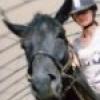
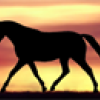

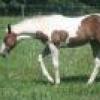

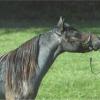


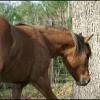
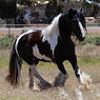
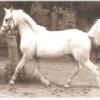
Re: Test for roan RELEASED!!!!!!!
Verrrrrry interesting! Different roan mutations would be weird because roan looks pretty much the same in all breeds. A roan Welsh has the same distribution of white in its coat as a roan QH. Multiple mutations makes loads of sense for something like sabino with all its variations, but I'm very eager to hear the explanation on roan.